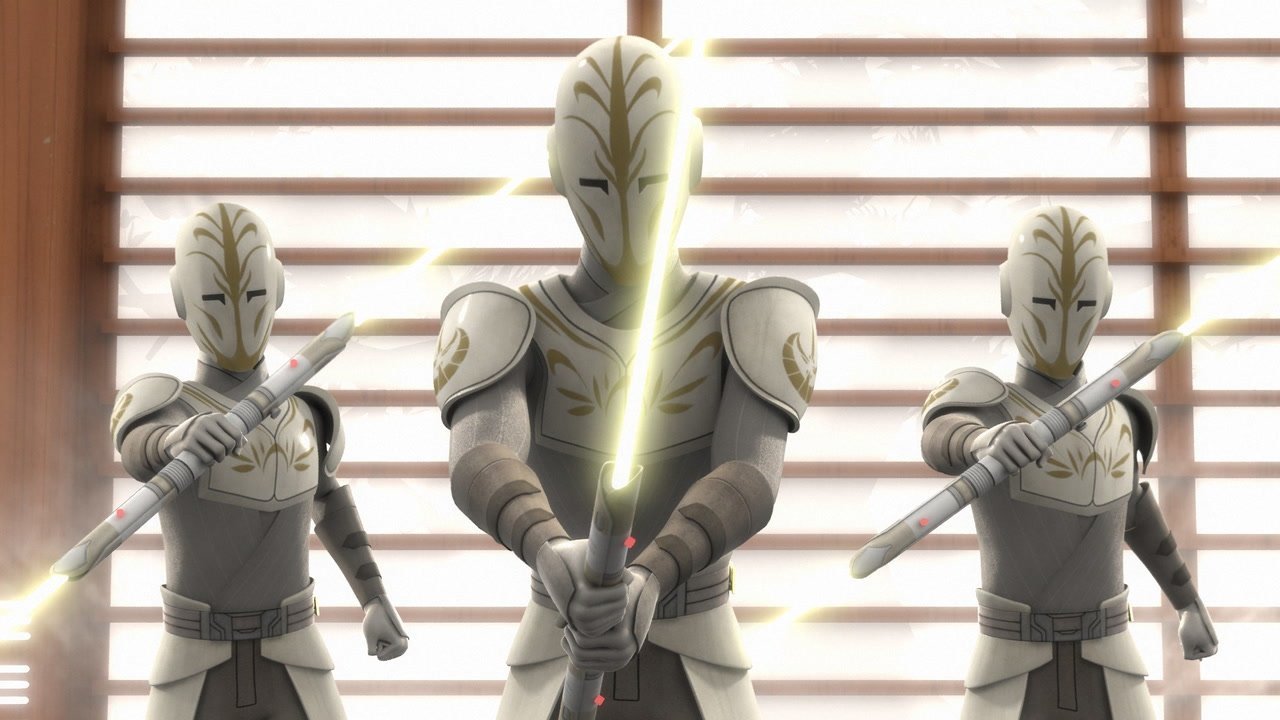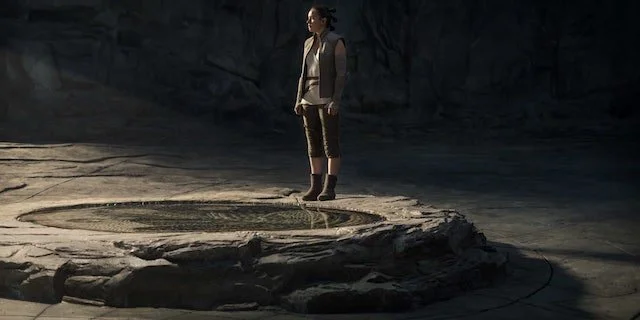The Historical Parallels Between The Fall Of The Jedi Order And the Knights Templar
Image Source: Wookiepedia
Numbers and military orders don’t mix well. Friday the 13th has all kinds of unlucky omens attached to it, especially for the Templar Knights. Then there’s Order 66, which might as well be the “Friday the 13th” for the Jedi. In fact, The similarities between the historical order of the Knights Templar and the fictional order of the Jedi involve more than just numbers. For one, both were comprised of warriors devoted to the protecting those who could not defend themselves.
The Knights Templar evolved out of a desire to safeguard passage and protect Christian pilgrims on their way through the Holy Land after the First Crusade. With thousands leaving Europe to pillage a foreign land, there was ample opportunity for exploitation of travelers. At one point, in what is now famously called the Children’s Crusade, divinely inspired youth set out to the Holy Land. It ended in disaster, with most of the children either dead or sold into slavery before any of them even made it to their destination. Safeguarding the passage of pilgrims to and through the Holy Land became a necessity. In 1118, 19 years after the First Crusade besieged and captured Jerusalem, the Knights of the Temple were founded.
RELATED:
Image Source: WorldHistory
Not long after, monastic big shot Bernard of Clairvaux penned a letter heaping praise on a new form of Christian knighthood. They weren’t the first, and they wouldn’t be the last, monastic military order to arise as a result of Christian aggression in the Middle Ages, but they did become the largest, the most powerful, and the most mysterious. Bernard of Clairvaux’s praise of their mission only helped to increase their notoriety.
The origins of the Jedi Order are not as well-documented. By the time they are introduced in the canon timeline, they’ve existed for (as Obi-Wan puts it) “over a thousand generations.” It’s doubtful that their origin story is as rife with politics and doctrinal maneuvering, but there’s no doubt that by the time of their fall, they are quasi-religious and seen by many outside their order as such. Palpatine himself uses the word “dogmatic” to describe the Jedi’s philosophy regarding the Force. Either way, both orders were created under the idea of being guardians.
Image Source: StarWars.com
Their monastical aesthetic is another area of close similarity. Jedi are supposed to forsake worldly possessions. They are to swear off compassion and attachments in pursuit of a more spiritual knowledge of the galaxy. They’re housed in the Jedi Temple on Coruscant, and beyond their lightsabers, they have no possessions aside from their humble robes.
The Templars started in a similar fashion. They originally took up residence in the al-Aqsa mosque that was believed to be built over the Temple of Solomon, hence their name. Their desecration of an Islamic holy site aside, they swore vows of poverty and monasticism. They gave up their worldly possessions, and their equipment had to be donated or lent to them by nobles and lords who could afford to do so. As with many things, however, it seems that creations take on a life of their own, and the attention both orders acquired would ultimately be their undoing.
It’s not exactly clear how Jedi are so well funded, but it seems that they receive their resources from the Republic. Long ago, they likely were not as reliant on government subsidies and support, but by attaching themselves to political entities like the Republic, they were inevitably drawn into the political machine. The Jedi went from reclusive mystics who could control an unseen element of the galaxy and used laser swords, to galactic police and safety officers, and then eventually to generals. This must have required massive resources, especially considering the ongoing need for ships, food, and technology. They established a massive network of information gatherers, temples, and watch posts around the galaxy. Their work in the Force made others regard them as wise peacekeepers, and they became widely regarded for their knowledge and dedication to neutrally arbitrating disputes.
The Templars, by the beginning of the 14th century, had gone from monks with swords meant to guard pilgrim caravans to one of the largest groups of land owners and banking networks in Western civilization. Their charter as a monastic order meant that they were technically barred from material possessions; however, as a military order, they needed weapons and tools of war, which weren’t cheap. They relied on donations from pious lords and kings, and over time, they amassed an extensive network of churches, castles, and forts along the routes to and within the Holy Land. If you know anything about the world before the the Age of Democracy, you know that power comes not from coinage, but from land. With their acquisitions they gained land, and thus, power. The Templars also instituted the first checking system. A person could deposit money in London, go on pilgrimage to the holy land, and “withdraw” their deposit upon arrival and presentation of a “check” attesting to their business. Therefore, on top of large amounts of land, they also acquired quite a bit of wealth.
However, all things that go up must come down.
Image Source: Wikipedia
Enter King Philip IV of France. Interestingly nicknamed “The Fair”, he was in deep monetary troubles, including debt he owed the Templars. He got himself involved in some costly wars, one in particular with England, and thus, quite a bit of debt. He saw a way out through the Templars’ secretive nature.
The Templars had grown quite powerful by then, but also pretty discreet. Their initiation ceremonies and rites were covert. It’s no surprise, then, that when a highly superstitious population sees a secretive organization, dark accusations spread. Philip capitalized on this suspicion and orchestrated a kingdom-wide “witch hunt.” On October 13, 1307, Philip IV had every French Templar they could get their hands on arrested. His goal was to seize their lands and make off like a bandit with their money. He had done the same to France’s Jewish population.
While technically an ally of Philip IV, the Pope at the time, Clement V, who had been trying to combine the Templars with another military order, the Hospitallers, found himself in a bind. As the Pope, he supported the Templars, but Philip had forced confessions from captured Templars that included admission of occult practices and blasphemy, and it forced Clement’s hand. He issued an order to the rulers of Western Christendom to arrest known Templars in their lands. Most ignored it, but the damage was done. Across Europe, the Knights Templar were effectively destroyed and eradicated as an order. Philip’s machinations did not completely pan out the way he thought, however; much of the seized land and assets were actually turned over to the Hospitallers.
Image Source: YouTube
The Jedi went much the same way. From an order of thousands of powerful fighters and mystics, they were seen by many outside their order as strange, and even envied. From clues picked up through dialogue in books and series, Jedi were seen as mysterious and even manipulative by some in the galaxy. To Palpatine, aside from being the eternal rival of the Sith, they were an obstacle to his machinations of power. Like the Templars, he used their legend to construct their downfall. When they became generals at the head of clone armies, it’s easy to paint the picture that they’re trying to secure power for themselves. With his Sith identity a secret to all except the Jedi, and having convinced Anakin to side with him, his survival was all the proof he needed to convince the Senate that the Jedi had tried to assassinate him and couldn’t be trusted (and had to be eradicated).
The Templars made the mistake of getting entangled in the banking industry, making themselves bedfellows with the nobility. Keeping their practices so close to the chest, however, allowed the King to play on those insecurities in a superstitious populace. It’s also arguable that by then Crusading was out of fashion, and they, being founded as a crusader order, had grown corrupt and avaricious, one of the most “un-Christian-like” qualities.
The Jedi made the mistake of attaching themselves to politics. Coupled with their intense blindness and arrogance, they failed to see Palpatine maneuvering them into becoming generals instead of guardians, and when they failed to see the negative optics of their involvement, Palpatine pulled the rug out from beneath them. He, too, played on the mysteriousness of the Jedi to turn public opinion in his favor.
It’s unknown if the creation of the Jedi by George Lucas was inspired by the Knights Templar, but the similarities they share in their operation, creation, and downfall seem to suggest there is some inspiration there. Both survived their downfall, but never again rose to the prominence they once had.
READ NEXT:
Source(s): Wookiepedia, Wikipedia







